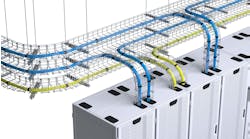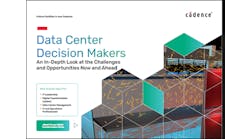Data center startup Quantum Loophole has raised $13 million in seed funding as the first step in its goal to develop gigawatt scale “data center cities” that will incorporate sustainability in new ways. The founding team features executives with deep experience in data center development, led by CEO Josh Snowhorn.
The company was founded in early 2020 and is based in Austin. After spending a year refining designs and plans, Quantum Loophole says its first development project is “well underway” at an undisclosed site, with details to come in the third quarter of 2021.
The leadership team includes Snowhorn, Chief Technical Officer Scott Noteboom, and VP of Real Estate Sylvia Kang. Former CyrusOne CEO Gary Wojtaszek will be on the board, and Equinix co-founder Jay Adelson is an advisor.
“Together with the talented Quantum Loophole team, we have re-imagined the way data centers can be developed in concert with natural resources for sustainability within the industry and our planet,” said Snowhorn. “Incorporating an ethically-planned and community-centric design that puts sustainability at the forefront, our master plan data center cities are designed to offer Gigawatt levels of critical power, leverage cutting-edge technology to deliver connectivity seamlessly and immediately, and offer mass scale fiber to nearby networking hubs.”
Master-Planned Data Center Cities
The Quantum Loophole team believes the hyperscale computing sector is reaching levels of scale that require new types of real estate solutions. At DCF we’ve been tracking the super-sizing of data center requirements, including projections that hyperscale leasing deals could reach 350 megawatts by 2022. That notion seemed hard to grasp four years ago, but is reinforced by leasing trends from 2020.
This means even larger cloud campuses, where technology titans concentrate massive amounts of computing power in multiple data center facilities. These data center hubs enable companies to rapidly add server capacity and electric power, creating economies of scale as more workloads migrate into these massive server farms.
Snowhorn isn’t ready to reveal the site of the first development. But it will be big, spanning more than 2,000 acres and access to more than a gigawatt of power. The goal, he says, is to disrupt the data center sector with massive developments, environmentally-sensitive design, and lots and lots of fiber.
The company aims to address the challenges of long-term capacity planning for hyperscale operators, based on common frustrations among the very largest data center users. Quantum Loophole’s approach can accommodate development sites for large customers, or creating build-to-suit data centers of up to 600,000 square feet.
“We’re giving people big, giant pieces of land within the campus,” said Snowhorn, who said the goal is to provide clients a 10-year runway for campus development. “Our approach to shared infrastructure and pre-planned site approvals improves performance, expedites time to market, while solving for the expediency and scalability large capacity data center operators require well into the future.”
An Experienced Team
The company name is a reference to design problems that can hobble experiments meant to validate the potential of quantum mechanics. Quantum Loophole’s seed funding has helped advance the company’s designs and early development prep. Building large cloud campuses will require more significant capital.
There is no shortage of capital available for data center development, particularly in the hyperscale computing sector. The company notes that the surge in online activity during the COVID-19 pandemic has bolstered interest in digital infrastructure investments. Snowhorn says the experience of the Quantum Loophole team should resonate with data center investors.
Here’s a look at the Quantum Loophole team and its background:
- Snowhorn has been a leader in the interconnection community for 20 years, helping building business connectivity ecosystems at Terremark and CyrusOne. He serves on the board of interconnection automation firm Telescent.
- CTO Scott Noteboom has led data center development teams at Yahoo and Apple, as well as AI/automation startup LitBit and immersion cooling company Submer.
- VP of real estate Sylvia Kang led data center site selection teams at Yahoo, Microsoft and CyrusOne.
- Board member Gary Wojtaszek served as CEO of CyrusOne.
- Advisor Jay Adelson is a pioneer in the digital infrastructure and startup communities who co-founded Equinix and led Digg and Revision3.






